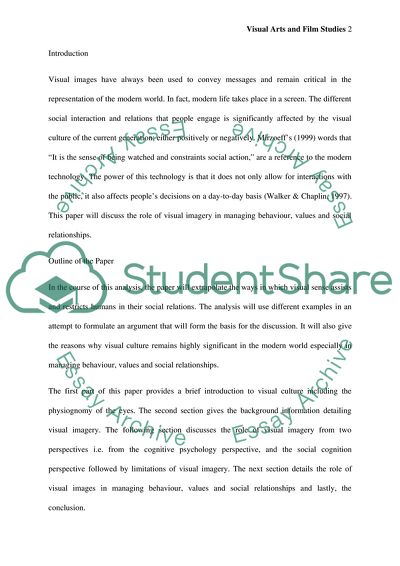Cite this document
(Visual Images and Managing Behavior, Values and Social Relationships Coursework, n.d.)
Visual Images and Managing Behavior, Values and Social Relationships Coursework. https://studentshare.org/visual-arts-film-studies/1852233-it-is-the-sense-of-being-watched-that-constrains-social-action-mirzoeff-1999-2009-45-what-part-do-visual-images-play-in-managing-behaviour-values-and-social-relationships-discuss-with-reference-to-specific-examples
Visual Images and Managing Behavior, Values and Social Relationships Coursework. https://studentshare.org/visual-arts-film-studies/1852233-it-is-the-sense-of-being-watched-that-constrains-social-action-mirzoeff-1999-2009-45-what-part-do-visual-images-play-in-managing-behaviour-values-and-social-relationships-discuss-with-reference-to-specific-examples
(Visual Images and Managing Behavior, Values and Social Relationships Coursework)
Visual Images and Managing Behavior, Values and Social Relationships Coursework. https://studentshare.org/visual-arts-film-studies/1852233-it-is-the-sense-of-being-watched-that-constrains-social-action-mirzoeff-1999-2009-45-what-part-do-visual-images-play-in-managing-behaviour-values-and-social-relationships-discuss-with-reference-to-specific-examples.
Visual Images and Managing Behavior, Values and Social Relationships Coursework. https://studentshare.org/visual-arts-film-studies/1852233-it-is-the-sense-of-being-watched-that-constrains-social-action-mirzoeff-1999-2009-45-what-part-do-visual-images-play-in-managing-behaviour-values-and-social-relationships-discuss-with-reference-to-specific-examples.
“Visual Images and Managing Behavior, Values and Social Relationships Coursework”. https://studentshare.org/visual-arts-film-studies/1852233-it-is-the-sense-of-being-watched-that-constrains-social-action-mirzoeff-1999-2009-45-what-part-do-visual-images-play-in-managing-behaviour-values-and-social-relationships-discuss-with-reference-to-specific-examples.


